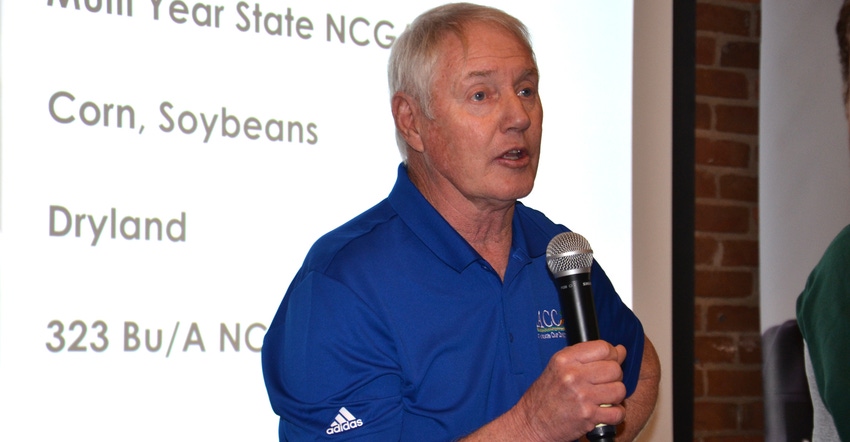
You can set the table for high corn yields. Mother Nature will still have her say, but if you don’t even set the table, you won’t push the yield monitor toward the 300-bushel-per-acre mark. That was the message three Indiana farmers delivered to fellow farmers at a recent AgriGold seminar.
All three have participated in the National Corn Growers Association yield contest, and two have surpassed 300 bushels per acre on competitive plots. The third has seen his yield monitor peg above 300 bushels various times.
The three corn growers are Brooks Cardinal, Oaktown; Rodney Finke, Columbus; and Terry Vissing, Marysville. Here are ideas they passed along related to increasing corn yields:
Brooks Cardinal. Cardinal farms with his brother Brandon and dad, Jerry. “You have to have your basic soil fertility right if you’re going to grow good corn,” he says. “It starts with nitrogen, phosphorus, potassium and sulfur. Then we will watch and decide what else we need. We’re going to have to pay attention to return on investment as well as yield this year, since margins are so tight. We will be careful what we spend money on and spend it for inputs which we believe will pay for themselves.”
Rodney Finke. “I agree with Brooks that we need to pay attention to the macronutrients first, including N, P, K and sulfur. Then we need a balance with the secondary nutrients, like calcium and magnesium, and we also look at the micronutrients. The goal is to have nutrients there when plants need them. I tend to spoon-feed the crop when I can.
“You want plants to start out healthy because several things related to yield are determined early. Then I try to maintain plant health throughout the season. I applied a generic fungicide at V10 on some corn in 2019, and it seemed to pay off. I came back with a different fungicide at brown silk. Corn stayed healthy until the end of the season.
“If you want high yield, you need to be focused on maintaining good plant health from the beginning of the season all the way through it.”
Terry Vissing. “Both of them are spot on in emphasizing soil fertility for high-yielding corn. We’re using micronutrients and will probably put on more boron going forward. You must supply enough potassium if you’re truly after 300 bushels per acre. Some people may think they’re putting on enough potassium, but if they’re used to growing 200-bushel-per-acre corn and are ramping up to 250 or higher, they’re going to be using more potassium than they might think.
“Tissue testing is an important part of our program for corn. We start early when the corn is small and pull samples every week during that period. The point is that if you pull tissue samples early and find out that corn needs one or more nutrients, you can do something about it before it’s already affected yield.
“I believe copper is a micronutrient that is important for test weight. Genetics isn’t the only thing that affects test weight. Nutrition affects it too.”
About the Author(s)
You May Also Like




